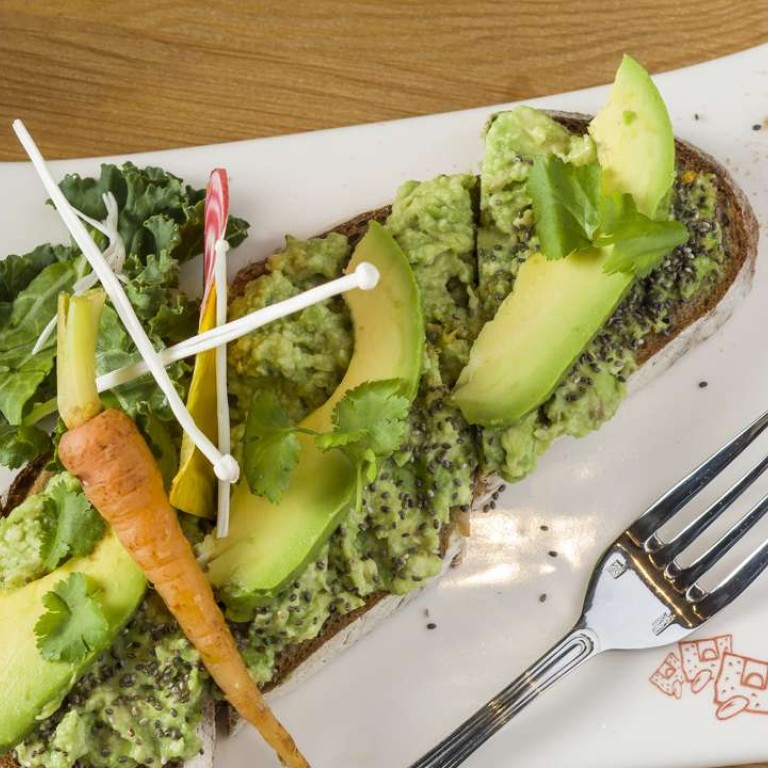
What avocados have to do with housing crises from Australia to Hong Kong
Economist’s claim that affordability crisis facing first-home buyers is really about profligate youth – epitomised by a swipe at Australia’s favourite cafe breakfast – should be taken with a pinch of salt
As in Hong Kong, housing affordability for the young is a constant topic of debate and anger. Many would-be first-home buyers are either priced out of the market or facing years of saving for a deposit yet, again like in HK, home ownership is considered not only an important economic guarantor, but a rite of passage.
Anger here may not have reached protest levels yet, but every now and then something sets off another wave of rage and debate.
But avocado?
“Shouldn’t they be economising by eating at home?” Salt mused. “Twenty-two dollars several times a week could go towards a deposit on a house.”
Most of Salt’s article was given over to middle-aged bloviating on the problems of small type on menus, loud music in cafes and that terrible milk crate seating, so unfriendly to the spreading, haemorrhoidal Boomer backside. But his specious swipe at young people enjoying food has once again kicked off the property debate.

Salt’s follow-up story pointed all this out, explaining the eating at home swipe as a joke at the Boomers’ expense as well as being the sort of preachy thing the now-comfortable generation might say.
Unaffordable Australian housing in government sights, Morrison says
Forgoing a weekly avo-toast smash (possibly Australia’s favourite cafe breakfast) yields A$1,144 over a year. In Australia, a ten per cent deposit is the minimum for a mortgage. Those eating out at Salt’s guess of three times a week might still need a few decades of economising by “eating at home”.
So much for millennial frivolity, but a win for a spurious correlation. Australia’s rising house prices have become impossibly high for many young people lacking family help.

There have been plenty of speedy counterpunches across media (old and new), with first Twitter and then other websites picking it up.
Public housing policy shake-up could slash wait times, but there’s bad news for existing tenants
However, the point so many counter punches made was that the median house price has become out of range for most first-home buyers. Yet the real situation facing first-home buyers may be even hopeless as traditionally they do not purchase in the middle of the market.
Stephen Gough, a senior executive at Melbourne’s Marshall White real estate agents who has 33 years’ experience in the industry, said the focus on median prices had obscured the even greater increases at the lower end of the market.
“Even entry level housing now requires roughly eight to ten times the average annual pre-tax income for people in their twenties and thirties; thirty years ago it was more like three times.”
Demographics company .id in Melbourne has assisted town planners and others involved in property and planning for two decades.

Gough added: “It is also obvious the average age of first time buyers has increased substantially, with many choosing to delay starting families in favour of saving a deposit for their first home.”
Economising on children, not breakfast, may have some serious demographic effects.
Hong Kong needs property developers that put social mission ahead of profit

One factor driving the problem for first-home buyers is how baby-boomers buying second or third houses for investment purposes have pushed the market up.
So-called negative gearing – the property buzzword of the decade in Australia – makes buying investment properties in Australia very appealing to those who already have a home. Essentially, if the interest on a mortgaged property is higher than the income in rent earned from it this can reduce the owner’s income tax bill.
This has pushed many houses out of reach for the young by inflating the market. Even those available to younger people such as homes far away on the urban fringe, do not experience much capital gain making them poor investment choices.
The solution seems far off, and while there have been no Occupy-style protests as yet, if there were you could guess the favoured staple that would be used to feed the hungry campers.
A former foreign correspondent in Asia, Helen Clark is based in Australia

